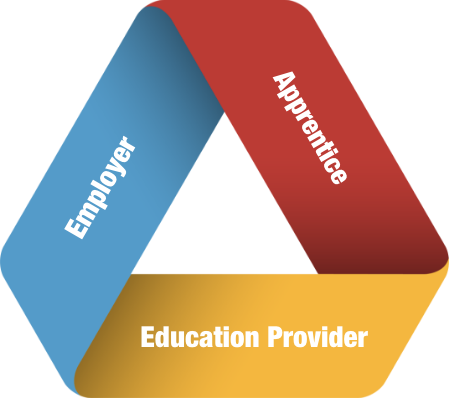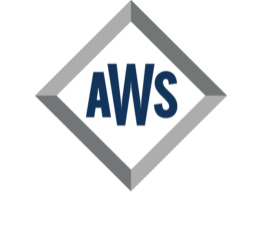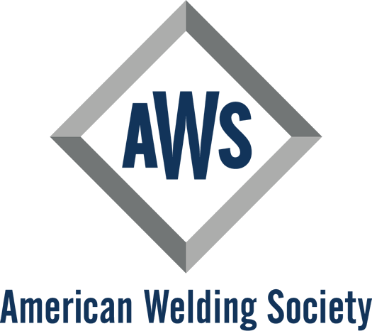
Taking workforce training into your own hands.
An introduction to welding occupation Registered Apprenticeship Programs for employers and education institutions, presented by the American Welding Society (AWS).
With the demand for skilled workers growing and the labor market tightening, employers across multiple industries are seeking new ways to build and retain their workforces.
Apprenticeships have been used as a mutually beneficial training system for centuries. Modern-day apprenticeships are often associated with trade unions. However, companies of all sizes can explore a Registered Apprenticeship Program to fulfill their unique workforce development goals.

What is a welding Registered Apprenticeship Program?
A Registered Apprenticeship Program is a structured apprenticeship recognized and supported by the U.S. Department of Labor or, in some cases, a State Apprenticeship Agency.
With a Registered Apprenticeship Program, an employer partners with an educational institution to provide an apprentice on-the-job training, mentorship, and classroom-based instruction. The apprentice is considered a paid employee and is expected to produce high-quality work that contributes to the company’s success while completing their training.
Advantages and opportunities.
Create stronger partnerships with local education institutions, workforce development boards, and economic development entities
Improve employee diversity and retention
Allow individuals as young as 16 years of age to legally enter the workforce
Recruit and develop your skilled workforce
Improve productivity through access to new technology and processes
Ensure high-quality employee development through national standards and industry-recognized credentials, such as AWS certification
Create customized training programs suited to your industry, business, and workforce needs
Other types of apprenticeship programs.
A Registered Apprenticeship Program isn’t the only way to enhance your workforce with apprentices. Below are other apprenticeship models and how they compare to RAPs.
Youth Apprenticeship Program
Also known as pre-apprenticeship, this is a DOL-supported program that enables youth ages 16-24 to experience an occupation or get a head start in their career while attending high school or a community college. Youth Apprentice Programs are administered by a sponsor and can be funded by workforce development boards. The program can be designed as an on-ramp to a RAP.
Unregistered apprenticeship
Companies can run in-house apprentice programs that aren’t connected to the DOL. For welding, unregistered apprenticeships are often used for emerging career paths (such as automation and additive manufacturing) or specialized work that doesn’t have current quality for RAP status.
Key Differences
Since the program can involve minors or high school students, employers may encounter additional limitations, such as what youth apprentices can do and how much they can work. Programs may run for 5-6 weeks, and regulations can vary by state.
Key Differences
Unregistered programs do not have access to federal funding. The employer is responsible for providing the education portion, and students may not earn college credits or recognized credentials.
Youth Apprenticeship Program
Also known as pre-apprenticeship, this is a DOL-supported program that enables youth ages 16-24 to experience an occupation or get a head start in their career while attending high school or a community college. Youth Apprentice Programs are administered by a sponsor and can be funded by workforce development boards. The program can be designed as an on-ramp to a RAP.
Key Differences
Since the program can involve minors or high school students, employers may encounter additional limitations, such as what youth apprentices can do and how much they can work. Programs may run for 5-6 weeks, and regulations can vary by state.
Unregistered apprenticeship
Companies can run in-house apprentice programs that aren’t connected to the DOL. For welding, unregistered apprenticeships are often used for emerging career paths (such as automation and additive manufacturing) or specialized work that doesn’t have current quality for RAP status.
Key Differences
Unregistered programs do not have access to federal funding. The employer is responsible for providing the education portion, and students may not earn college credits or recognized credentials.
How apprenticeship programs are structured.
When creating a Registered Apprenticeship Program, you can utilize a pre-approved training plan or customize elements to your company’s needs. Most welding apprenticeships are completed in three or four years.
There are several components to consider when building your program.
Industries for apprenticeships.
Registered Apprenticeship Programs are suitable for various industries and companies of all sizes.
Employer size:

Small business
Less than 100 employees

Midsize enterprise
100–1,000 employees

Large enterprise
More than 1,000 employees
Common industries:
Piping

Structural
Fabrication
Maritime/shipbuilding
Aerospace
Oil and gas
Manufacturing
Construction

Facts versus fiction.
There are several common misconceptions about apprenticeships that prevent employers from pursuing this viable training and recruitment option.
Fiction:
“Apprenticeships are just for labor unions.”
Fact:
By creating a Registered Apprentice Program, your company can customize and upskill training to your specific job requirements and needs. You can also engage your local workforce development board for help creating and promoting your apprenticeship program.
Fiction:
“We don’t have the time to provide all the training.”
Fact:
As an employer, you provide on-the-job training that coincides with your regular business operations, while your education partner handles the theoretical and foundational instruction.
Fiction:
“Apprenticeships are just for large companies.”
Fact:
Companies of all sizes can participate in a Registered Apprenticeship Program. In some cases, an educational institution can set up apprenticeships with multiple employers in the same area.
Fiction:
“Hiring an apprentice is too expensive.”
Fact:
Apprentices are paid employees, and their wage progressively increases with training. However, the DOL offers funding resources to cover or reimburse apprenticeship costs for employers.
Fiction:
“Starting an apprenticeship program isn’t worth the effort.”
Fact:
According to the DOL, apprenticeships help companies boost productivity and reduce employee turnover to minimize labor costs. For welding occupations, forming partnerships with a local education provider can enable your company to access to new technology and techniques.
Getting started.
When you’re ready to start or join an existing Registered Apprenticeship Program in your area, use the following instructions and resources to take the next steps.
Learn and explore Registered Apprenticeship opportunities for welding.
Check out the video below for an informative webinar all about Registered Apprenticeships for welding occupations and how they can provide a workforce solution for your organization
Decide if a Registered Apprenticeship Program is right for your organization.
Consider both the upfront investment and the long-term impact on your workforce and company growth.
If you’re an employer, contact a local education institution that offers a welding program (technical school, community college, etc.). If you’re an educator, reach out to local employers that are growing or hiring skilled workers. You can also contact the workforce development board in your area for assistance in forming partnerships.
Not sure who to talk to? Use the
Apprenticeship.gov Partner Finder Tool
Register with the DOL or state agency.
Apprenticeships are overseen by either the DOL Office of Apprenticeship (OA) or a recognized State Apprenticeship Agency (SAA).
Stay updated on welding apprenticeships.
The number of new RAPs across all industries has increased 70% in the past decade. With growing interest and funding, there will be more opportunities for businesses to build their workforce and educators to train students in high-demand occupations.
Fill out the form below to receive updates on welding-related apprenticeship programs endorsed by the AWS.

Founded in 1919, the American Welding Society is a nonprofit organization with over 65,000 members and a global mission to advance the science, technology, and application of welding and allied joining and cutting processes. AWS develops technical standards, certifications, and educational resources used by professionals throughout the industry.
As the philanthropic arm of the American Welding Society, the AWS Foundation works to ensure the growth and development of the welding industry through various initiatives, including career awareness, scholarship programs, and grants to institutions that offer welding education and training.
For more information, visit AWS.org/foundation or contact us at [email protected].





